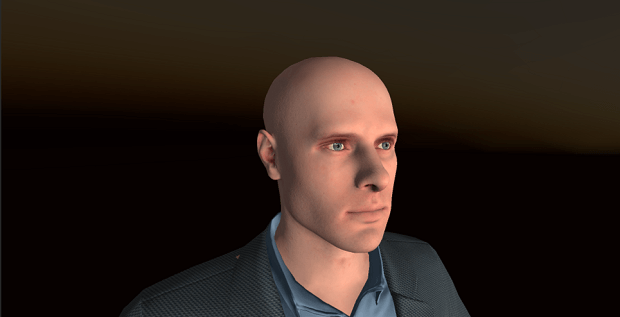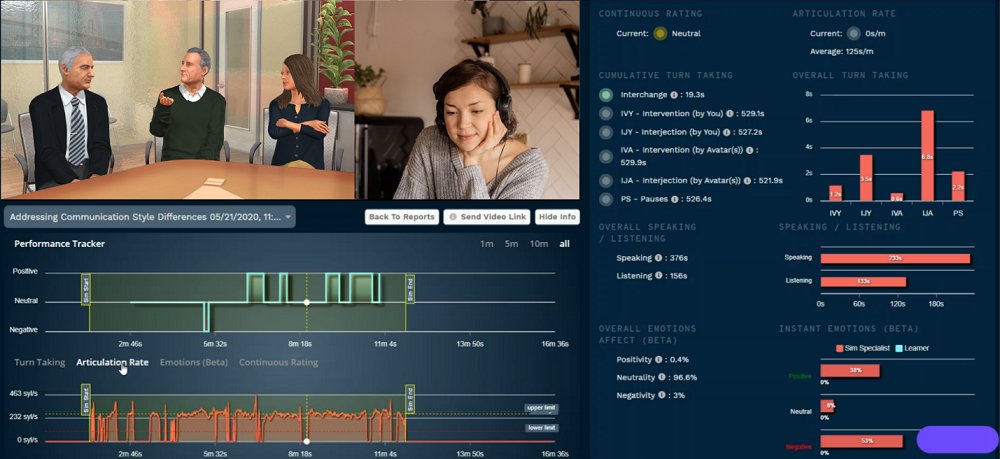Below is our recent interview with Arjun Nagendran, Co-Founder & CTO at Mursion:

Q: Could you provide our readers with a brief introduction to Mursion?
A: Mursion is a virtual reality (VR) platform where professionals practice, learn and master the essential skills needed to be socially effective in their high-stake careers. Mursion’s unique VR platform allows individuals to recreate high stress scenarios that may commonly occur in the workplace and practice handling them with digital characters (avatars), driven by the power of human reasoning and artificial intelligence (AI).
Q: FastCompany recently named Mursion as one of the World’s Most Innovative Workplace Companies. Could you elaborate on your use cases?
A: Mursion’s VR platform is architected technologically to create highly realistic and engaging simulations that can be customized by organizations and individuals as needed at runtime. Research using this technology has showed that people engaged in simulations via Mursion can have emotional and behavioral responses that may be comparable to real-life. This opens up the possibility for personnel to use the platform in a plethora of ways within their organizations to address several challenges including leadership training, medical training for soft-skills, management training, conflict resolution, negotiations, diversity, equity, and inclusion (DEI) training, human resource training, customer service training, and sales training to name a few. As mentioned in this article by FastCompany, companies such as Coca-Cola, Nationwide, and T-Mobile represent a global customer base of nearly 200 organizations who are finding new and innovative ways to leverage the strengths of Mursion’s VR platform to best-suit their current needs.
Q: Mursion combines Virtual Reality and Artificial Intelligence. Why is this approach so effective?
A: Mursion was built on the foundational principle that difficult conversations in real-life can be simulated before they occur, to safely inoculate against unpredictable behavioral changes in the presence of stress. At the heart of Mursion’s platform are algorithms that leverage the most powerful aspects of Virtual Reality and Artificial intelligence to stimulate the visual and auditory senses of a learner engaged in a simulation.
(i) We position the learner in very realistic situations by rendering visuals that match the context in which the simulation is occurring, reinforcing the plausibility and realism of the situation. Multiple avatars can be tailored to match any age, gender, or ethnographic profile on screen, allowing us to create a diverse range of simulation scenarios and study learner performance.
(ii) We have learnt from data that language, accents, and even vocabulary during these highly engaging simulations play a huge role in reinforcing the authenticity of the interaction. Machine learning is used to gather role-player intent, digital signal processing (DSP) technologies are used to mask the role-player’s identity and advanced low-cost networking paradigms support bi-directional communication between multiple learners and multiple avatars within a single simulation session allowing us to scale training to the maximum.
(iii) Finally, AI algorithms analyze data from the simulations to provide learners with an absolute, relative, or self-referencing score at the end of each simulation. Learners can also watch their own simulation videos and receive real-time feedback on their performance during the simulation, with the option to pause, alter their strategies, and retry their approach to navigating complex workplace conversations.
 Image 1: An avatar generated using AI algorithms and rendered inside Mursion’s VR platform can be controlled by a combination of artificial intelligence and live human performance.
Image 1: An avatar generated using AI algorithms and rendered inside Mursion’s VR platform can be controlled by a combination of artificial intelligence and live human performance.
This proprietary blending of VR and AI algorithms enables us to ensure that no two simulations are ever the same (unless it is required for an assessment), and learners see a variety of demographics in the form of avatars, with each one posing a unique learning challenge. The more simulations a learner performs, the more prepared they can be to handle stressful conversations that may occur in the real-world – a concept referred to as multi-exemplar training. I’d like to encourage readers who are interested in learning more about the rationale behind the use of these technologies to visit this blog series about Mursion.
Q: What does the future of Mursion look like?
A: Mursion’s algorithms for human performance analysis will continue to evolve as more and more organizations use the system. Privacy, anonymity, and security of personal data is the highest priority at Mursion to provide organizations and their employees with a safe space to use the platform for learning and development. Our algorithms do not perform any semantic analysis but instead simply analyze the raw features in the audio and video streams of the simulation and present the highlights of their interaction – micro interactions in which they had a positive impact or a negative impact on their avatar counterpart during the simulation. In addition, we minimize the use of AI algorithms that require supervised approaches to be successful, thereby decreasing the amount of algorithmic-bias we inject into our platform. We continuously consult with psychologists and subject matter experts to ensure that any supervised learning approaches have checks in place to mitigate potential bias that can be introduced into the model. While we are still studying and refining our approach to this analysis, there is sufficiently positive evidence that this data can be used to provide organizations with workforce analytics that may help them re-organize teams for maximum productivity, efficiency, and the likes.
 Image 2: Mursion’s AI algorithms analyze raw data in the visual and audio streams between learners and avatars in a simulation, to provide valuable insights that can help improve social effectiveness in a multitude of workplace contexts.
Image 2: Mursion’s AI algorithms analyze raw data in the visual and audio streams between learners and avatars in a simulation, to provide valuable insights that can help improve social effectiveness in a multitude of workplace contexts.
Q: How quickly can organizations adopt Mursion and see their ROI ?
A: Getting started with Mursion is very simple. Users can sign up for a demo via our website. Following the demo, our design team will help the organizations customize simulations so they are most relevant to them and have the maximum learning impact in under 2 weeks. Following this, organizations can invite their learners to schedule and run their simulations at any time from their offices or homes through multiple device modalities including VR headsets and desktop applications. We have a proven track record of delivering VR simulations to over 20,000 learners within a single organization in as little as 4 months. We work with organizations on a custom basis to collect standardized data from our simulations and connect them directly to the organization’s specific ROI metrics. For instance, we can help develop a program during this engagement period that shows an improvement in customer satisfaction, or employee engagement as a direct result of an organization utilizing Mursion. In more complex cases, our team of expert analysts can help map the impact of simulation performance on real-world metrics such as productivity, turn-over, absenteeism and other organizational KPIs.
Activate Social Media:


